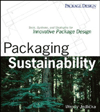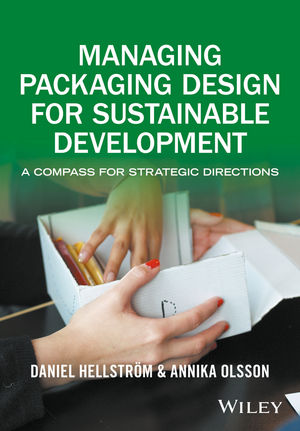Printing: Digital
Package Prototyping with Film Media - A Roadmap for Success




For flexible packaging applications, films have become more popular than ever. This trend is due to advances in both the materials available and in press technology that, together, have taken the quality of film packaging to the next level. Not only are films easier to print today, but they also yield better image quality and are much more durable. In fact, today’s packaging films maintain their image quality exceptionally well through the converting and shipping processes, out on the retail shelf, and ultimately when in the hands of the consumer.
There are other reasons for the popularity of films. They are extremely versatile and come in hundreds of options, from shrink wrap and other clear films to metallized options, foils and pressure-sensitive media. Because films are flexible, they can be wrapped around contours and corners, giving you the ability to decorate every inch of a product’s surface for a bold branding statement. Films also deliver high visual appeal by infusing a seamless look into the product’s presentation. Plus, products packaged with film substrates require less shelf space and weigh less than those packaged with rigid substrates. And printing on films is much easier and more cost effective than printing directly on rigid materials.
When it comes to selecting a film, you should consider the application at hand. For food packaging, bags work well and give you expanded design options to make your product stand out from the rest. Pouches are ideal for packaging very small items, including objects and liquids. Shrink bands and wraps work well for hard-to-label items such as beverages and other bottled products, as they encase the unique shapes of products and their containers. Sleeves work well for bundles and already-packaged items. For the allure of metallic, foils provide a high-impact presentation.
Regardless of the option you choose, working with films can present its challenges. One of the biggest challenges is ensuring that the integrity of your original design is reflected in your final output.
Achieving precise results in production requires accurate prototyping capabilities. To generate realistic package prototypes, consider implementing a digital workflow, including a wide-format inkjet printer. This investment will save you time, materials, labor and costs over the long run and will free up your presses for production. It will also allow you to print multiple iterations of your design, on demand and very cost effectively. Having the flexibility to refine and perfect your design before going into production will help you create more effective packaging in general, and will also help you avoid any negative surprises during the final press run.
When it comes to prototyping film packaging, UV-LED digital printing technology is best, and offers specific benefits over conventional UV technology. UV-LED lamps last up to 10,000 hours, ten times longer than conventional UV lamps, for dramatically lower operational and maintenance costs. They also emit very little heat, which makes them much more versatile with respect to the media they support than conventional UV curing systems. This is important because printing on the actual substrate you use in production yields highly realistic results. Unlike conventional UV lamps, UV-LED lamps support heat-sensitive media, including films such as shrink wrap. Consider also that UV-LED lamps do not need any warm-up time, so they are ready to start printing immediately after being powered on. They are also smaller, more energy-efficient and completely ozone free, making them a safe alternative to conventional UV lamps.
In prototyping and in production, the quality of your inks is one of the most important factors in determining the quality of your results. Packaging inks should be highly durable and also deliver a wide gamut and rich, saturated colors. They should have enough elasticity to stretch around the contours of your product without cracking. White ink is a must as so many film materials are clear. When printing your prototype, make sure you adjust the ink density to match the density you will achieve in your final press run. This will ensure the most realistic results.
As with any other type of packaging application, working with films requires advanced technologies to ensure that colors are accurately reproduced. Make sure your printer and RIP software have full integration with the color management software you are using on the press. Top software companies in this space such as CGS, EFI and GMG offer solutions that support both wide-format devices and your production press, providing accurate color representation from the prototyping stages to the final press run. Take full advantage of PANTONE® libraries and other spot color matching tools within your RIP to reproduce logos and other branding elements accurately.
In the end, prototyping and final production work hand in hand to deliver the high impact your brand deserves. Today’s UV-LED printers are more versatile than ever, supporting a myriad of packaging materials in addition to films, and offering a range of advanced finishing capabilities. Look for a printer that includes clear inks for simulating embossing and varnishing effects, and contour cutting for scoring, die-cutting and kiss-cutting your packaging. The better your prototype is – and the more realistic – the better your final product will be. And on today’s crowded retail shelves, a brand needs every advantage it can get.
Roland DGA Corp.
(800) 542-2307; www.rolanddga.com
Looking for a reprint of this article?
From high-res PDFs to custom plaques, order your copy today!










